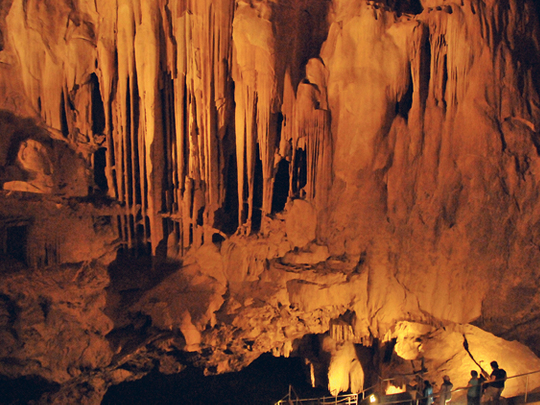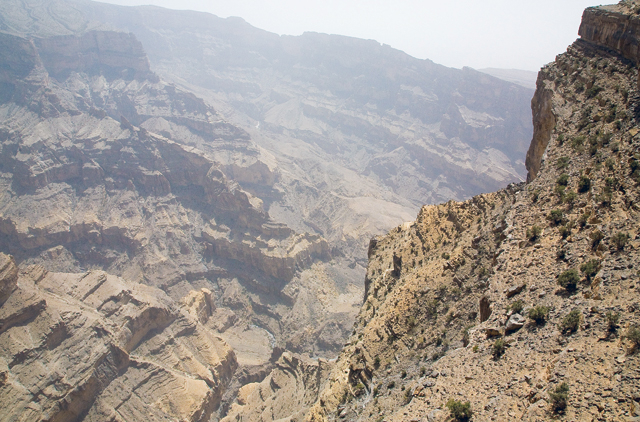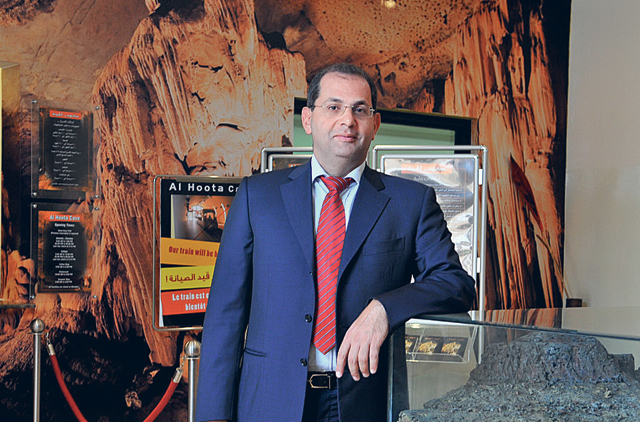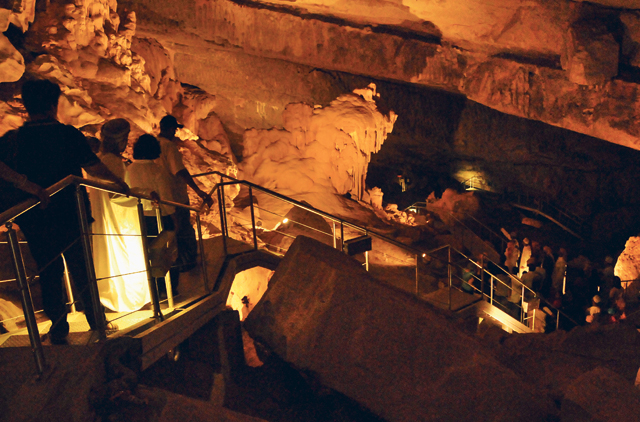
Albert Einstein has said the most beautiful thing we can experience is the mysterious. Come to Oman to experience a bounty of mysterious locations which make this country a unique tourist destination.
There are mountains — green and dry brown — gorges, deserts and beaches. And caves such as Al Hoota tell us how water dissolves the hardest of rocks to form shapes that best of mural makers would toil to create.
Best of both worlds
The 2.7-kilometre underground tunnel at the foot of the Jebel Shams (Sun Mountain), about 150 kilometres northwest of Muscat, has been lit in a way that puts tourists at ease but at the same time maintains the natural ambience of a cave.
Al Hoota Cave is the two-million-year story of how rock dissolves under water and how water sculpts rock.
However, until about 50 years ago, the cave's existence was not known. "The cave was discovered in the 1960s by a dweller from the nearby Hoota village," said Ahmad M. Sabra, founding CEO of Promo Oman. Sabra, whose company manages and markets Al Hoota Cave, added that the unknown villager was letting his goats graze on the slopes when one of the goats wandered off.
"The goat fell through the natural entrance of the cave and as the shepherd searched for it, he discovered the cave," Sabra said.
Into another realm
Then the small opening at the top of the mountain became an access point, especially for adventure spelunkers as they lowered themselves inside the cave with ropes. That opening is almost unused but is lit up from inside to show visitors the original opening.
"Now tourists can enjoy a guided tour through the Al Fallah entrance," Sabra said. The tour takes about an hour.
The approach to the Al Fallah entrance is not very far from the main reception area but when the cave was thrown open for tourists, a train was introduced for visitors to cover a distance of about 400 metres.
Missed ride
However, this correspondent was not fortunate enough to take a ride on the train. "We have to get spares from Germany to make the train run again," the Promo Oman chief said. However, when that will happen only time will tell.
As we walked in the peak of the afternoon, the blazing sun beat down on the dry mountain slopes. However, as soon as we entered the cave, the temperature dropped and there was a damp feel to the ambience.
That is when we realised the cave is as much about water as it is about stone. Water is everywhere, from the molten rock that envelopes you to the little pools that trickle into the lake.
Living in the shadows
The main lake in the cave is around 800 metres long and 10 metres wide, 15 metres at its deepest point. The dark recesses of this cavernous lake house life. The deep green subterranean lake is home to hundreds of tiny fish, the blind Garra baremiae, which is unique to this ecosystem. The fish are delicate and transparent and visible only in lights or torch flashes.
As we took pictures of the patterns of rocks and the formations of calcium deposits or magnesium, our young Omani guide told us these have been formed by rainwater.
A variety of techniques was employed to create a well-lit pathway for visitors — concrete, elevated walkways, steel steps and bridges. And keeping the safety of the tourists and the ecosystem in mind, a 1,300-metre stainless-steel handrail has been installed along the pathway.
More importantly, platforms have been built at strategic points for visitors to get the best views.
The subtle use of lights and their placement retain the mystery we associate with caves. Bats hanging from the ceiling complete the sense of enigma.
Figures in stone
The power of water is evident in Al Hoota Cave. You can see how the water has sculpted the rocks over the years. "This is shaped like a lion," says the guide, after which the group of 40 start imagining every possible shape in the rocks — from a meditating lady to an elephant deity, Ganapati.
The water had indeed sculpted beautiful shapes as it sliced through the rocks to form the cave. There are stark white-gold calcium deposits along with the dull reds and the pale pinks of magnesium.
If you are planning a trip to Al Hoota Cave, say from the UAE, it is advisable to book in advance, as there is a restriction on the number of visitors — about 750 a day.
It is easy to reach the cave once you are on the road to Nizwa, as distinct brown boards give clear directions. Ideally, one should plan an overnight trip to Jebel Shams and combine it with the visit to the Al Hoota Cave.
The Lebanese Zajal Restaurant inside the cave complex serves a sumptuous meal at a reasonable price and the service is great. There's also a souvenir shop and a geological museum.
"The geological aspects of the cave are presented for a touch-and-feel experience at the exhibition on the second floor of the visitor's centre," Sabra said.
He added that visitors could view more than 150 showcased items of rock and exhibits of rock wood and meteorites.
The interactive machinery would be of interest to those eager to understand how the cave has been formed.
Visitors can watch the continental plates move, affecting the depth of the cave. Even the unique blind fish found in the lake are on display in an aquarium imitating their natural dwellings.
Unravelling the mysterious cave is a truly beautiful experience.
Fast Facts
- The guided cave visits last about an hour.
- Contacts for reservations are: Tel: +968 24490060; Fax: +968 24490134; E-mail : nina.ventsik@promooman.com
- Photography and video shooting is strictly prohibited inside the cave.
- The cave was officially opened on November 18, 2006.
- The average number of visitors touring Al Hoota Cave on a normal day is 400, whereas on weekends and holidays, it touches 750.
- The visitors enter in batches of 30 and tours are available every 15 minutes, between 9am and 5pm, excluding a lunch break between 1pm and 2pm.
- There are approximately 1,000 people from the UAE who visit Al Hoota Cave every year, resulting in more than 3,000 visitors over the past three years.
- After phone ore-mail booking, tickets can be purchased at the visitors' centre upon arrival.










